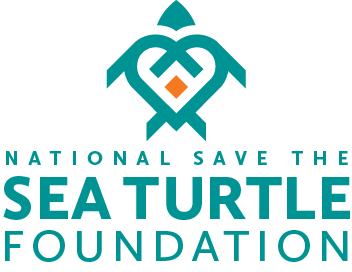Update: Tracking Male Green Turtles in SE Florida
Larry Wood and Dean Bagley
It has become widely recognized among the sea turtle research and conservation community that we know comparatively little about the lives of male sea turtles. At first this may seem odd, but researchers have traditionally had relatively easy access to females and hatchlings, since they are, at one time or another, found on beaches. Males, on the other hand, can’t be found so easily because in almost all cases, they never come to shore.
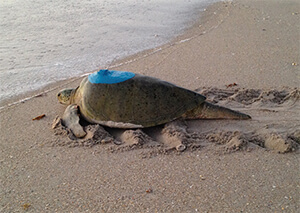
“Nick”
Ms. Bagley and her team have been focusing on a population of green turtles that nest on the beaches at the Archie Carr National Wildlife Refuge in Melbourne, Florida. The green turtle nesting population is quite large there, and offers her team unusual access to male turtles. In their zeal to reproduce, male turtles may continue to grasp females even as they come ashore to nest, effectively getting carried into the surf zone by their companions.

This provides Ms. Bagley’s team the opportunity to capture the males and attach satellite transmitters to their shells. The results are among the first ever that describe the reproductive migrations of male green turtles in Florida. The National Save The Sea Turtle Foundation is excited to support Ms. Dean Bagley’s important work. This year, she dedicated two of the satellite tags to members of the Foundation’s team. The first was named for the late Captain Nick Reeves, who sadly passed away recently but remains in our memories. The second was named for Mr. Wayne Kurian, one of the key members of the Foundation’s fundraising team whose work continues to be so important to the Foundation’s success.
Nick's transmitter was deployed on 5-29-19 . He immediately took off to the south, and swam to beyond the 17th Street Bridge in Vero Beach (green dots) before turning around on 5-30-19 and coming back north to Sebastian Inlet, where he stayed until 6-4-19 (light green dots). At that time, he began swimming south again (yellow orange dots, orange, red-orange and finally red dots) along the coast, in some places practically on the beach as he continued south.
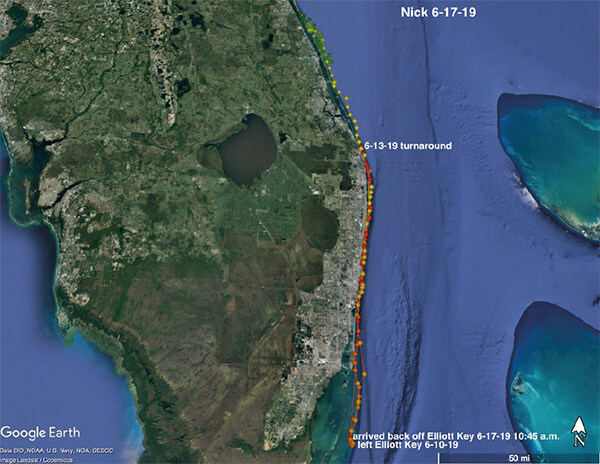
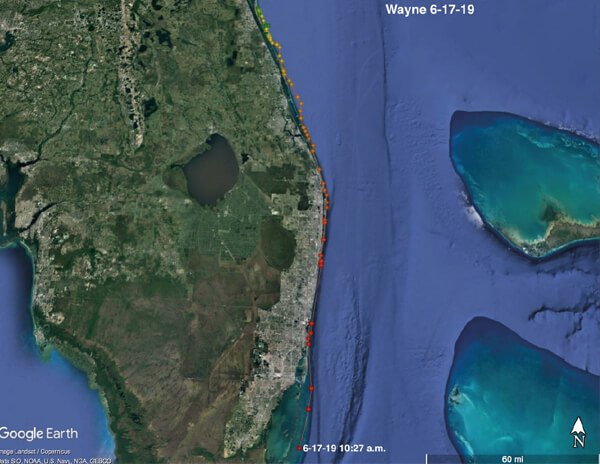
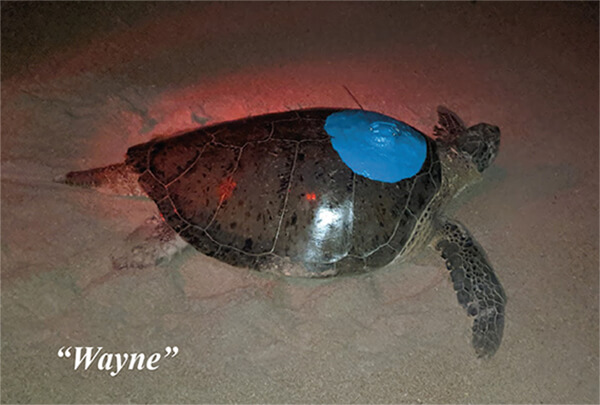
He arrived just off Elliott Key, at the south end of Biscayne Bay on 6-9-19, looked around (maybe rested?) a bit and started north again on 6-10-19. His last location was opposite Key Biscayne on 6-10-19 at 9:09 p.m. He may have set a new record for the trip south. He made it from Sebastian inlet to Elliott Key in about 7 days.
Wayne took us a little longer to find. Wayne was deployed on 6-4-19. Upon release, he headed immediately north, spending most of his time south of Eau Gallie Blvd in our Central Brevard Study Area, but going as far north as Satellite Beach before leaving that area and coming back south on 6-9-19. He crossed Sebastian Inlet later that day and continued south, uninterrupted, until the last location on Hutchinson Island, just south of Jensen Beach and north of the St. Lucie Inlet on 6-11-19 at 1:55 a.m. When we left off , Nick was east of Elliott Key, at the south end of Biscayne Bay. He left on June 10 and has since made the journey back north to Jupiter, arriving on the 13th and turning around to come back south, also on the 13th. It’s like he forgot something and went back to get it.... he didn’t spend any time there, and was back off Elliott Key by 6-17-19.
Meanwhile, Wayne was just south of Jensen Beach and north of the St. Lucie Inlet on 6-11-19. He has continued south and was still migrating at his last reported location, also east of Elliott Key. We’ll keep you updated in upcoming issues of Florida Environmental Outreach Magazine!
Helping Sea Turtles Survive for 38 Years
A NON-PROFIT ORGANIZATION
State of Florida Registration Number CH-2841 | Internal Revenue Code 501 (c) (3)
Web Design & Development by Web Expressions, LLC
